Pros and cons
Advantages and disadvantages of the design of the combined room.
| pros | Minuses |
|---|---|
| The combined space visually looks larger and more free. | Without a powerful hood, food odors are absorbed into upholstery and other textiles. |
| An excellent communication opportunity is provided with family members during the cooking process. | |
| With the help of various zoning techniques, it turns out to achieve a stylish and original interior. | Noise from household appliances can be disturbing. |
It turns out to save on the purchase of some items, such as a dining table, kitchen cabinets or a TV. |
Layouts
At the very beginning, before the upcoming redevelopment, it is required to create a project in which they think over finishing work and zoning. The next step is drawing large pieces of furniture on the plan, taking into account their optimal location.
Dining room combined with living room
This design, with a dining area flowing into a seating area, is quite common and is especially preferred for those who value comfort.
In a living room in an apartment with a complex layout, it is very easy to beat the location of the dining segment. For example, if you have a bay window, you can equip a dining group in it, which will look detached and at the same time remain part of the overall interior composition.
The photo shows the layout of a long modern living room combined with a dining room.
An equally original solution is the arrangement of the dining room on the loggia or balcony.
In a small room, instead of a table, it is possible to install a compact bar counter. A similar design is also equipped with spacious storage systems.
The photo shows the interior of a small combined living-dining room, made in light colors.
For a spacious hall of 18 or 20 meters, zoning is chosen using columns or wide and high arches. An interesting effect can be achieved by delimiting the space with a podium, which is perfect for both spacious and small rooms. On this elevated area, a dining area is placed and sometimes the structure is equipped with drawers, niches and other things.
Kitchen-dining room
To make the interior of the kitchen combined with the dining room comfortable, special attention is paid to the decoration of the room. For the working area, practical materials are used in the form of ceramics, metal or artificial stone, and the dining area is decorated with wallpaper, plaster or wood.
The photo shows the design of the dining area combined with the corner kitchen.
In the design of a spacious studio kitchen, stylish island or peninsular headsets are often found, including U-shaped or corner structures, which are sometimes complemented with a functional bar counter. For a small room, linear options or models with the letter g are more suitable.
When planning a kitchen, it is important to consider the convenient location of the working triangle with a refrigerator, stove and sink.
The photo shows a light linear kitchen with an island combined with a dining room.
If the kitchen has an architectural element such as a bay window ledge, it will be converted into a dining area. The recess is made out with a sofa with a round or rectangular table. For a small room, it is appropriate to install a corner furniture set with built-in storage systems.
The photo shows a kitchen design with an attached dining area located in a bay window.
How to combine a dining room, kitchen and living room in one room?
Such a room is at the same time a place for rest, a cooking area and sometimes even a work area. Therefore, it is rather difficult to achieve a harmonious combination of three rooms into one full-fledged space.
However, taking into account the competent planning and zoning, you can give the multifunctional space a very cozy look.
In the photo there is a living room combined with a kitchen-dining room, made in the neoclassical style.
In this case, for the design of the combined kitchen, living room and dining room, a more laconic design is selected and does not clutter up the situation with unnecessary items. The room should have additional free space and good artificial and natural lighting.
Such a design provides an opportunity to embody many interesting ideas. For example, as zoning, we use unusual wallpapers and photocloths to emphasize and draw attention to certain sections, or we originally separate the dining area and resting place with the help of a decorative panel.
The photo shows the layout of the dining room, combined with the kitchen and the guest area.
Zoning
Partitions are a common type of visual delimitation of space. They not only perfectly complement the design, but also solve the insulation problem. Wooden, metal, glass or plasterboard structures are used as a zoning element. The furnishings can also be complemented by folding or sliding screens in a colorful or neutral design.
In the photo there is a fireplace as a zoning element between the kitchen-dining room and the living room.
For a non-standard design solution and create a smooth transition from the living room to the dining room or kitchen, they choose zoning using lighting. The workplace for cooking is equipped with spotlights and diodes, and table lamps and a chandelier are selected for the recreation area or dining area.
In the photo there is a dining area in the living room, separated by a flight of stairs.
The most convenient way is to divide the room through furniture elements such as a bar counter, an island module, a dining table, a rack, a curbstone or a sofa.
Color zoning is suitable for marking the boundaries in a small room. For example, the walls, floor or ceiling in the kitchen can be decorated in neutral and calm colors, and the living room or dining room can be decorated in rich and bright shades.
Lighting
Regardless of the size of the combined kitchen, dining room and living room, there is always a sufficient amount of light in the room. The best quality lighting is installed in the work area. The luminous flux must fall on the countertop, stove and sink.
In the photo there is a ceiling decorated with white spotlights in the design of the living room combined with the kitchen-dining room.
The design of the dining area is complemented with a chandelier, candlesticks or small lamps, and the living room is decorated with sconces, floor lamps or lighting that has a muted glow.
The photo shows a variant of ceiling lighting in the living room combined with the dining room.
Furniture
As a dining table, models designed for at least 8 persons and structures with the possibility of transformation are used. For the design of a small room, it is better to choose more concise and compact products of a rectangular or square shape. The ideal place to place the table is near the window or the central part of the room.
The photo shows the design of the kitchen and dining room, complemented by a glass-fronted cupboard.
If there is enough space, armchairs or more massive chairs with armrests will do. It is appropriate to arrange a small room with light folding or transparent chairs.
A sideboard, console or hanging glass cabinets will organically fit into the design of the dining room, in which you can store dishes, cutlery, textiles, and more.
Decor
To make the interior complete, various decorative details are used in the form of paintings, mirrors, figurines, panels, photographs, posters, vases or even an aquarium. Minor details in the form of cookbooks and all kinds of utensils can add coziness to the surrounding design.
The photo shows the decorative design of the living-dining room, made in the Provence style.
You can significantly transform the space with potted plants, living phyto-walls or pictures of natural greenery.
The photo shows the design of the living-dining room, decorated with green phyto-walls.
Photos of interiors in various styles
The interior in a modern style is characterized by laconicism, originality of finishing materials and combines innovative technologies with long-standing design traditions.
The classic style, with its sophisticated gloss and expensive elegance, presupposes precise symmetry in the placement of decorative elements and furnishings. In the environment, the presence of natural materials, ceramics and bulky lighting fixtures is encouraged.
The loft style fits perfectly into the interconnected spaces. The design features brickwork, contemporary cladding and bold combinations of different elements.
The photo shows a combined kitchen-dining room-living room in a modern style with an interior designed in white and green tones.
The art deco direction is characterized by special beauty. For the interior, it is appropriate to use natural materials and glass structures in the form of lampshades or separate inserts. The design contains natural curves and floral motifs.
Scandinavian design presents a light whitewashed color scheme combined with natural wood, which is quite a fashionable duo nowadays.
Photo gallery
Due to the correct distribution of plots, zoning of the premises and a well-thought-out design project, it turns out to achieve a comfortable and cozy kitchen interior, combined with a living room or dining room.

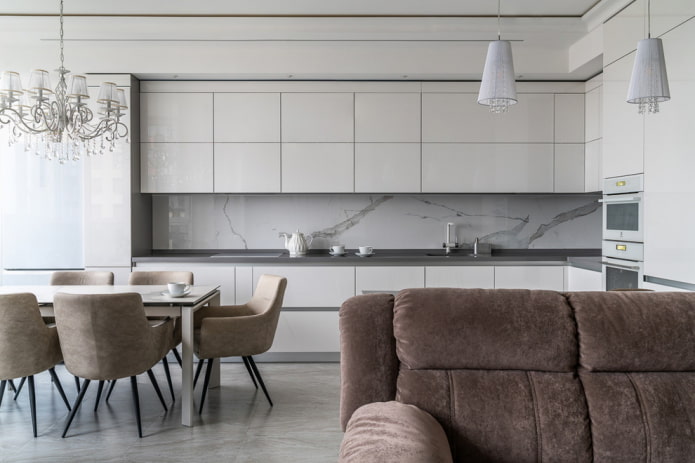
 10 practical tips for arranging a small kitchen in the country
10 practical tips for arranging a small kitchen in the country
 12 simple ideas for a small garden that will make it visually spacious
12 simple ideas for a small garden that will make it visually spacious
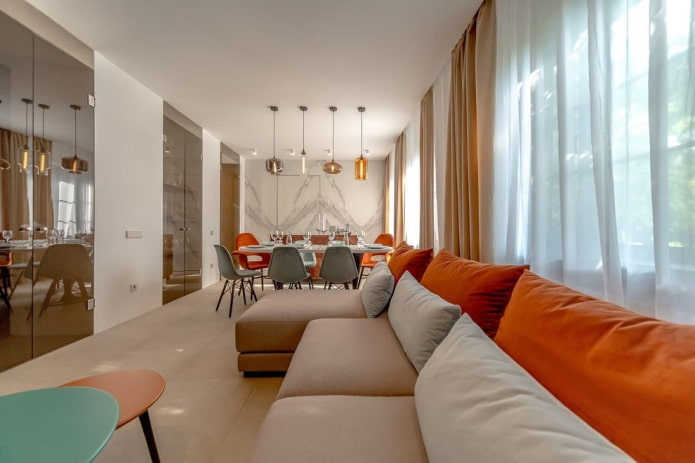

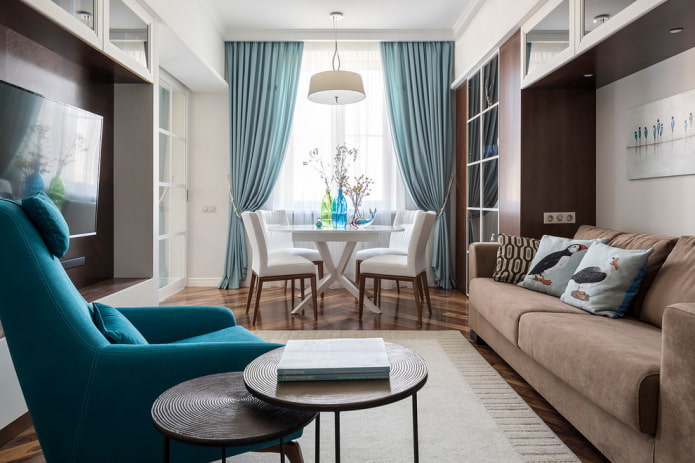
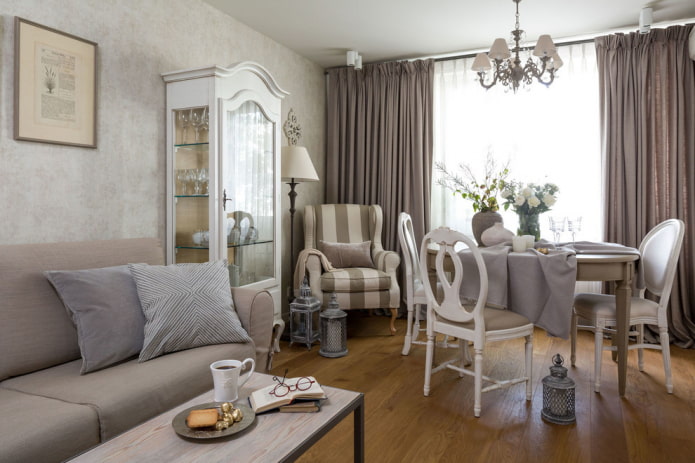
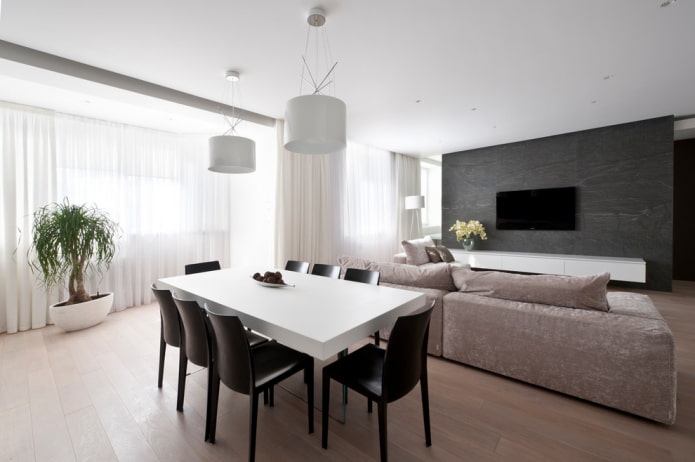
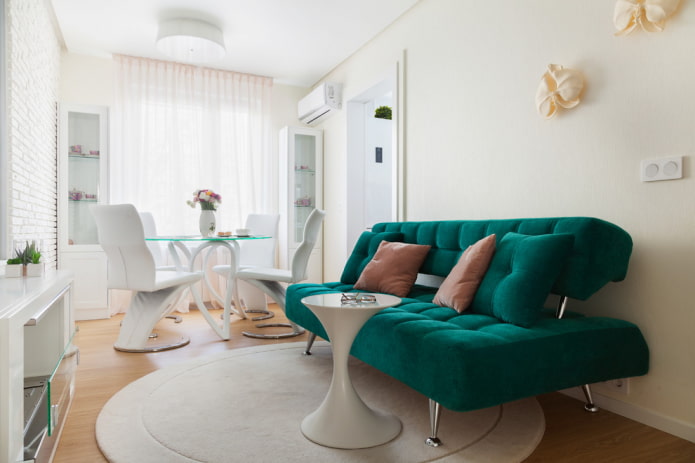

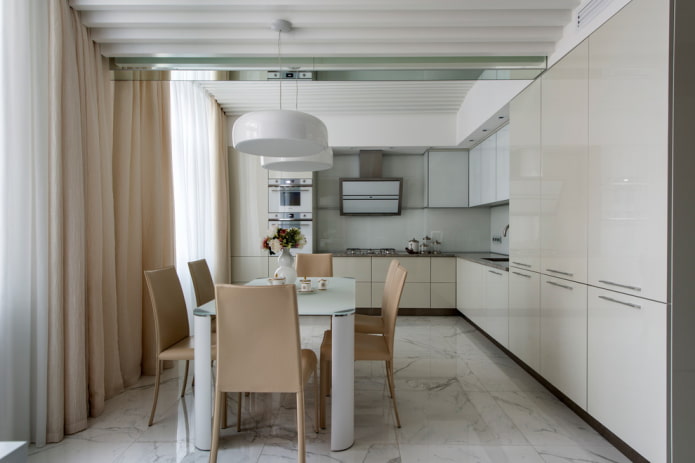
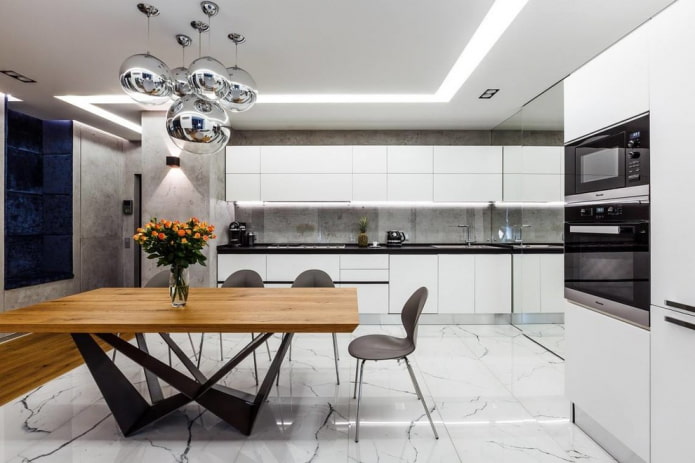
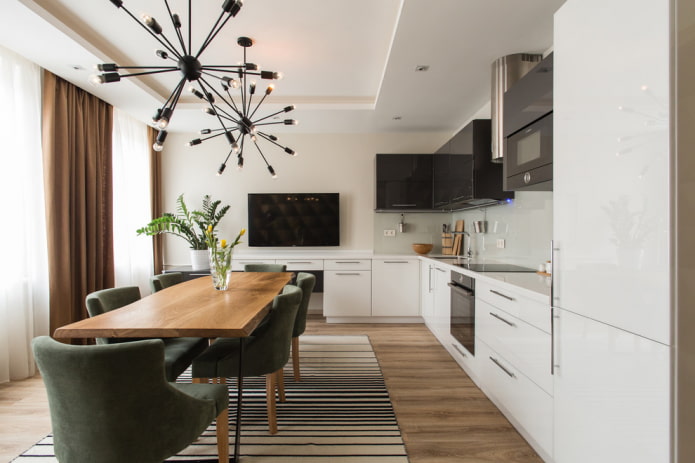


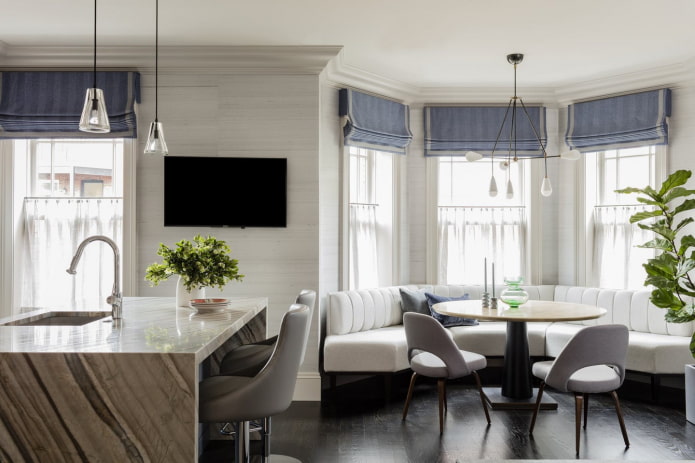


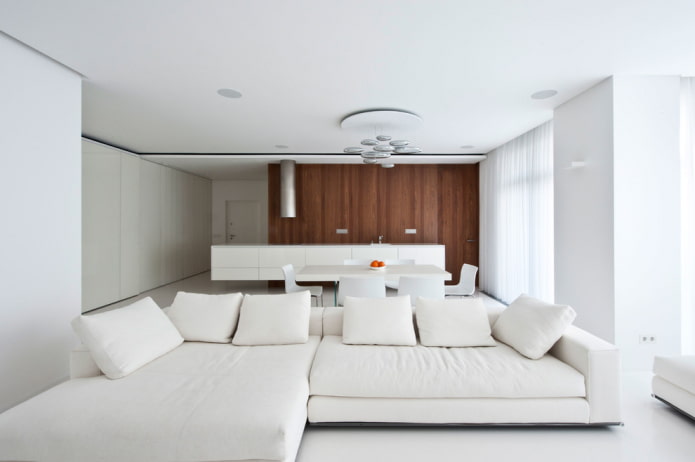
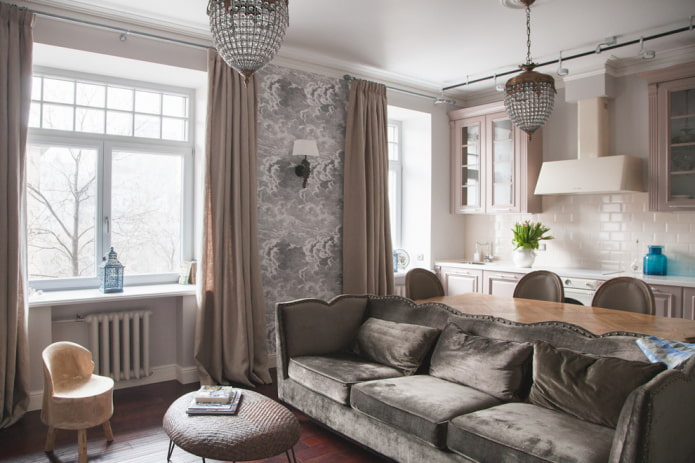
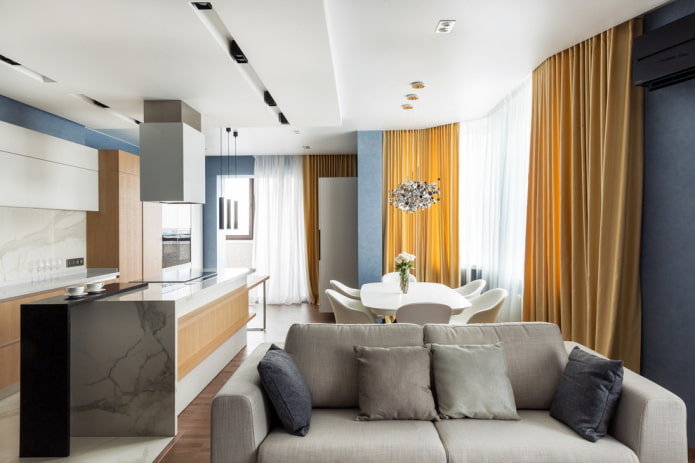
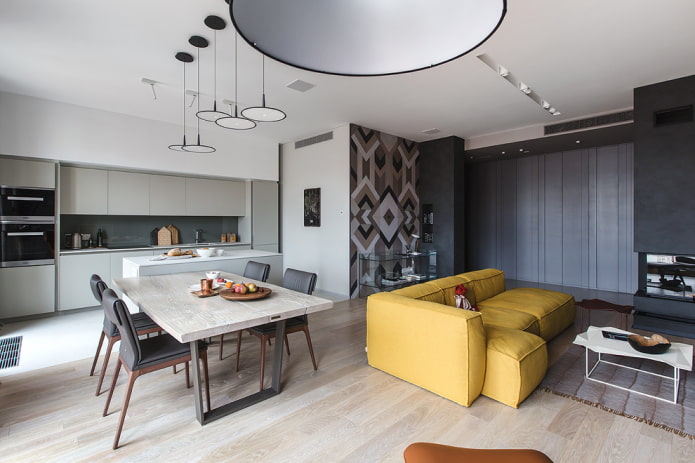


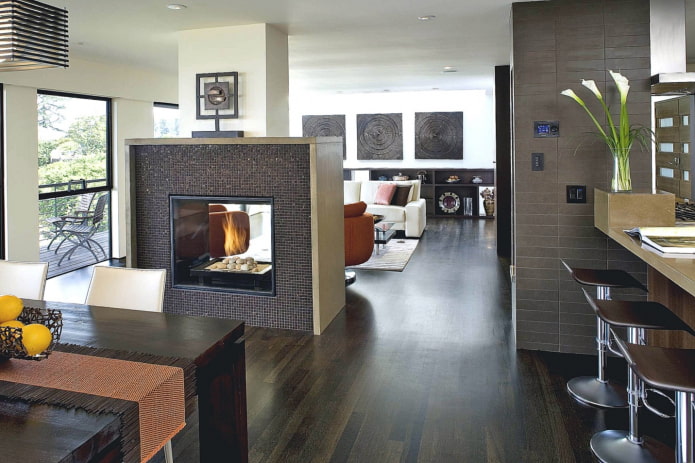
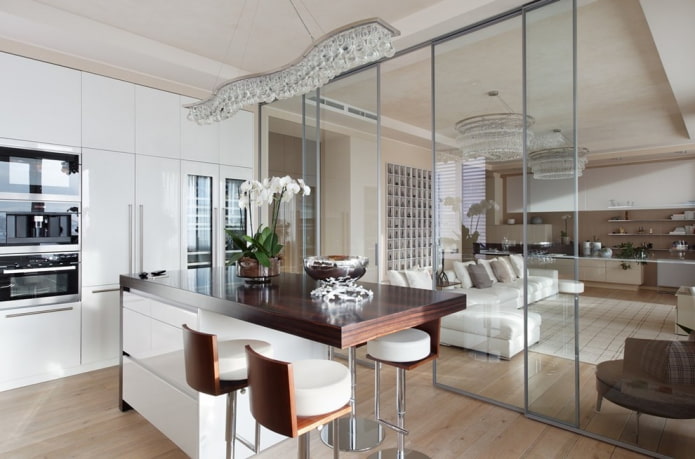
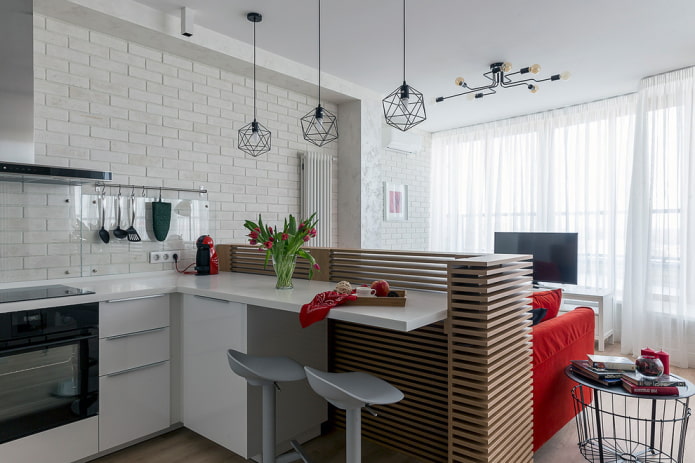
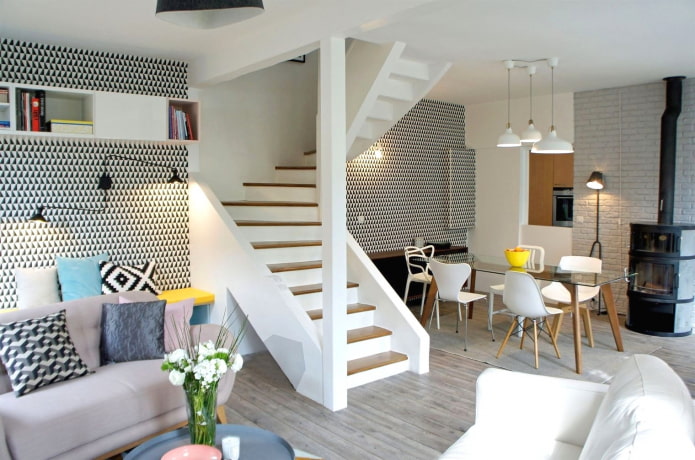
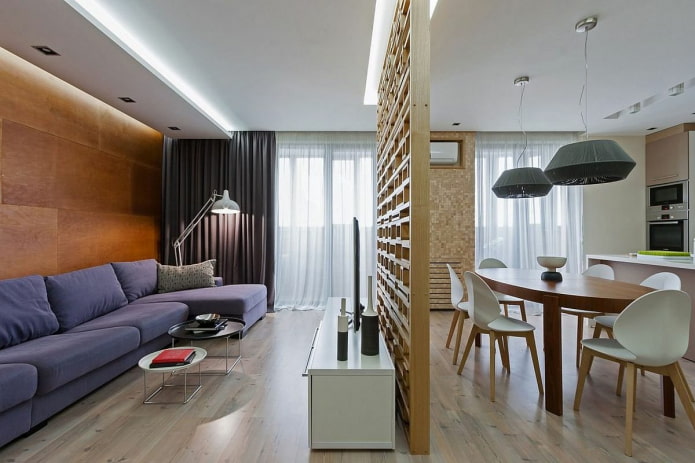
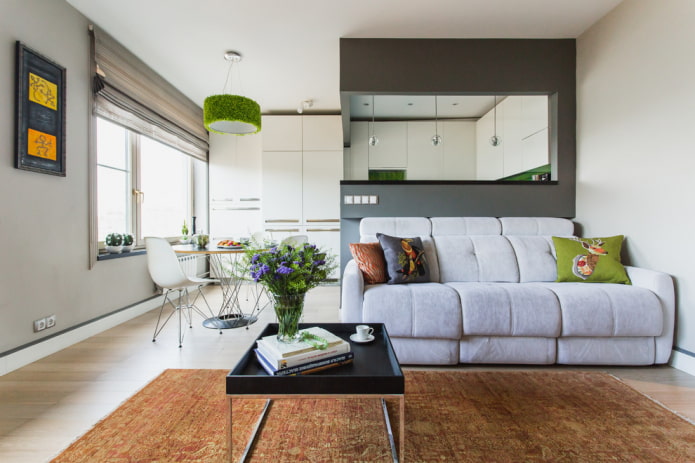
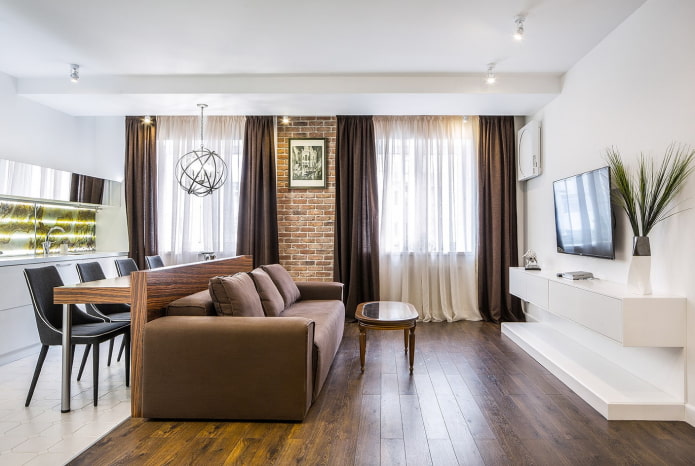
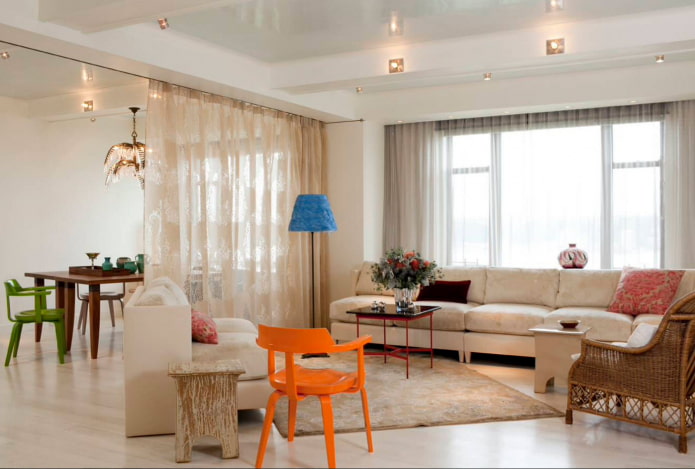
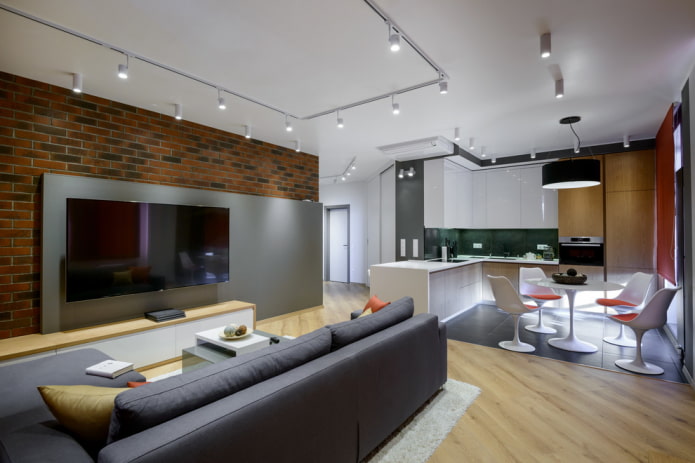
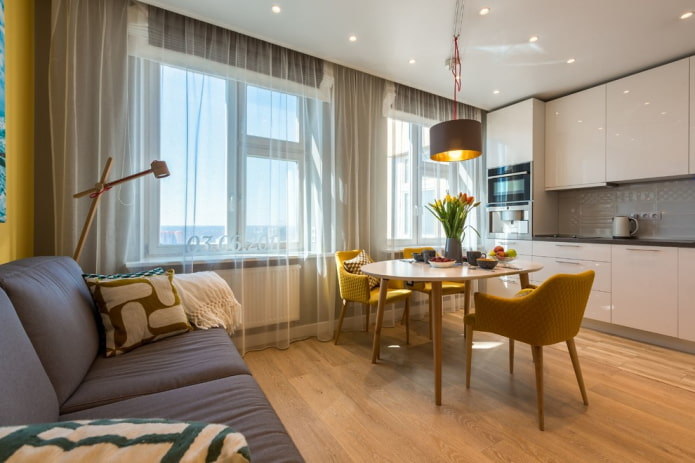
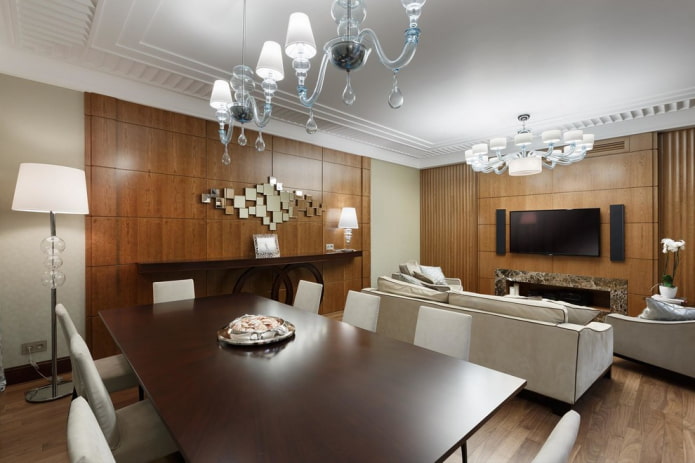
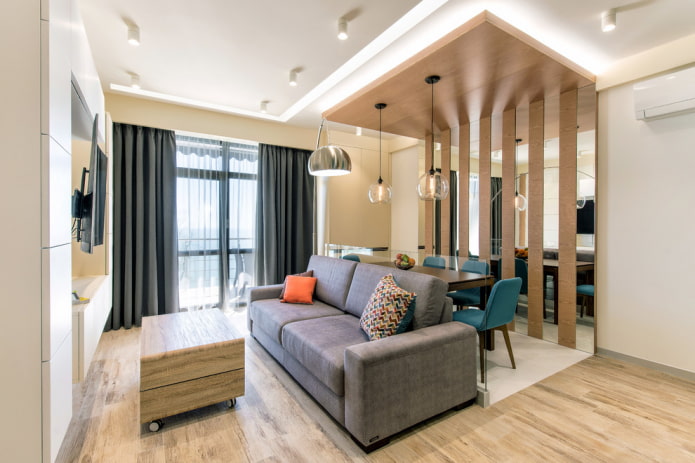
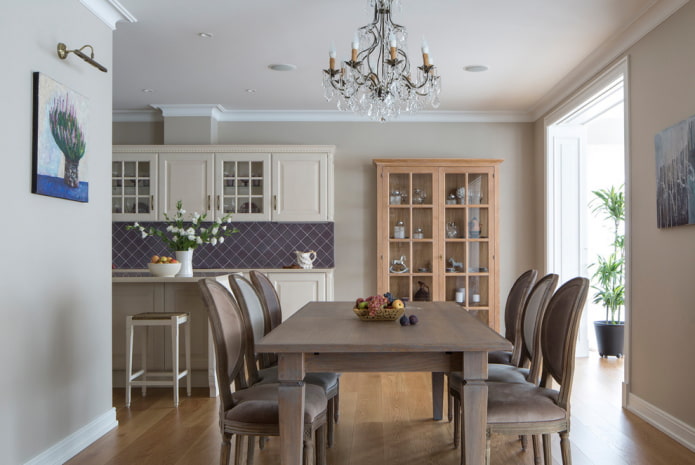
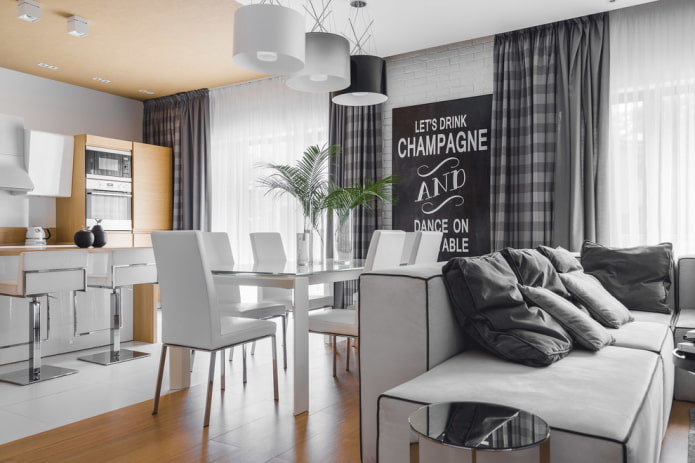
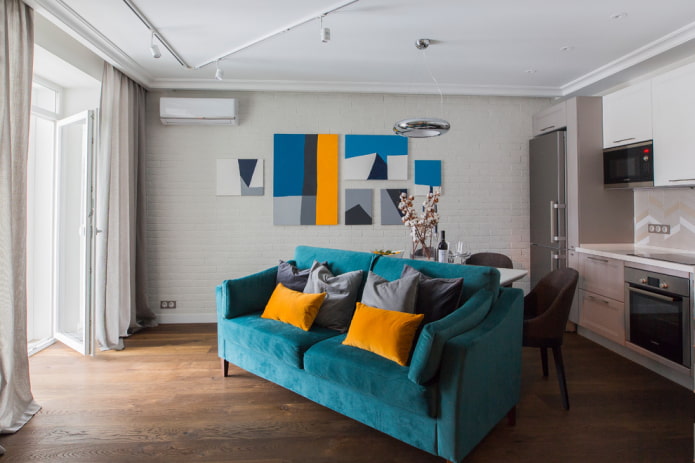

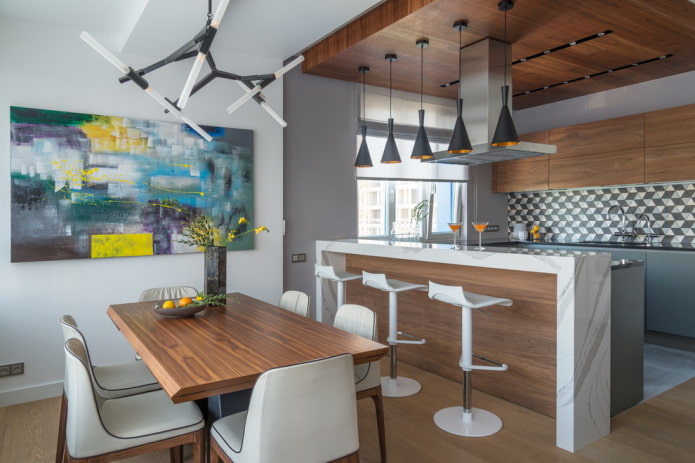
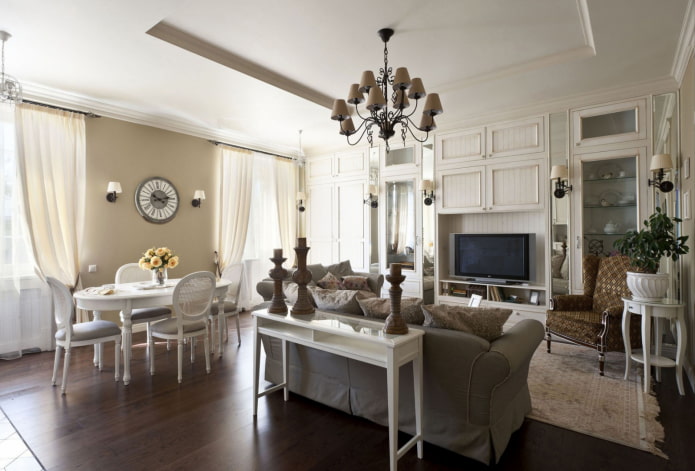
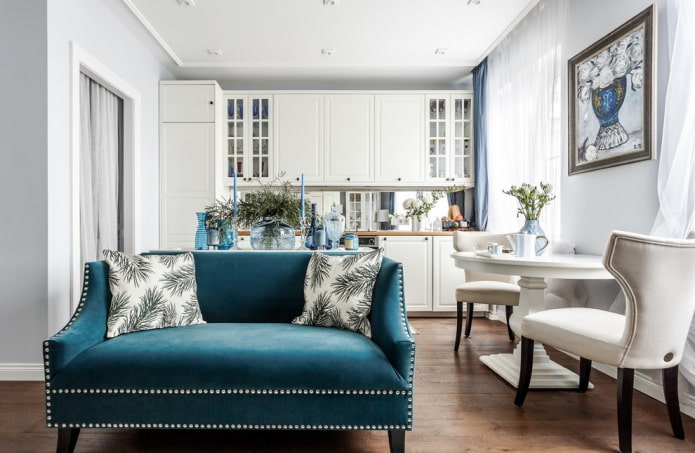

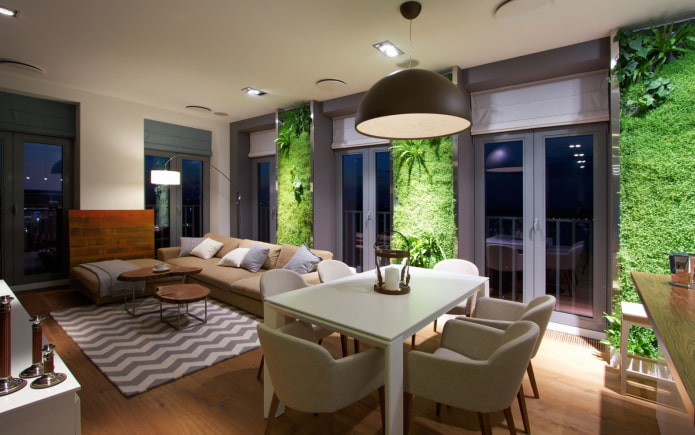
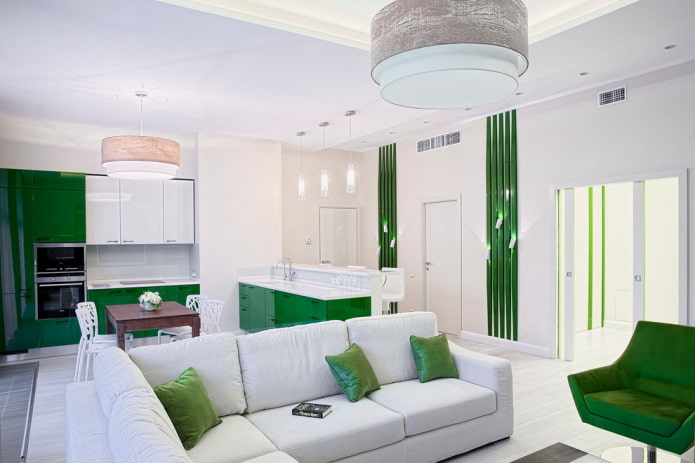

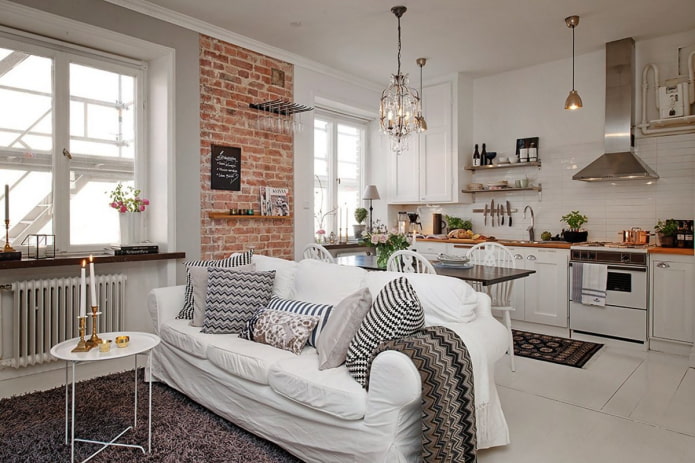
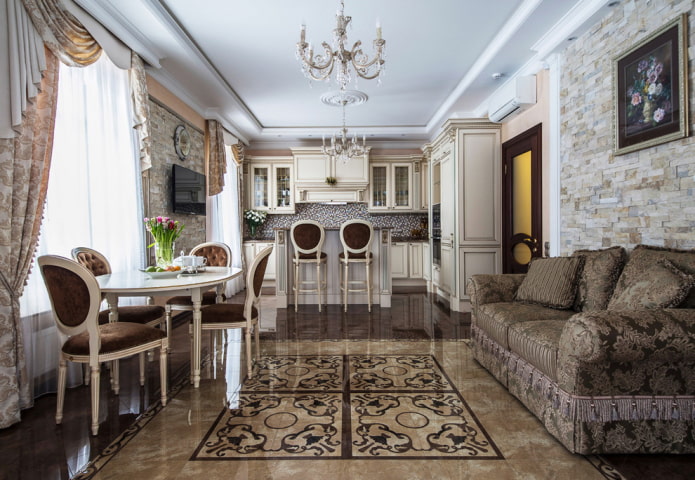
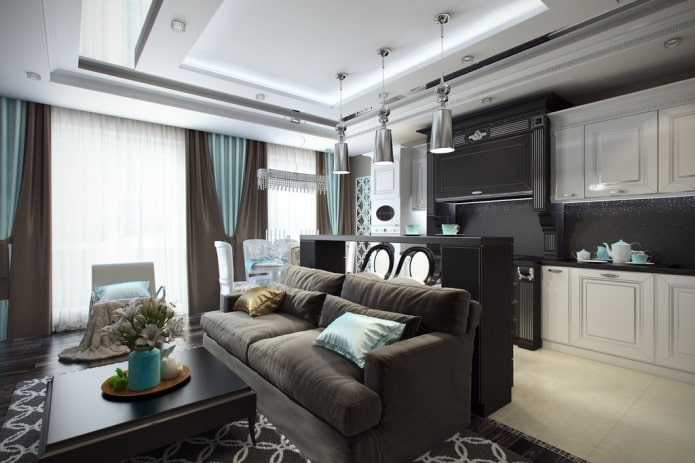
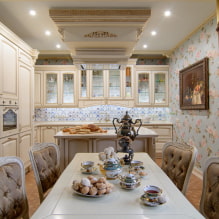
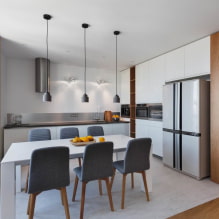

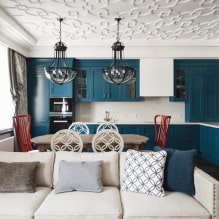
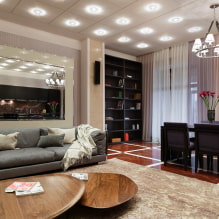
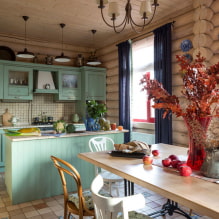
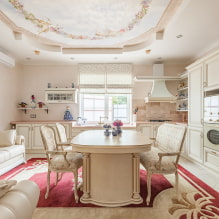
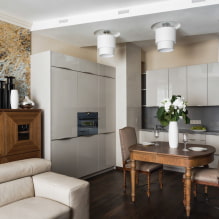
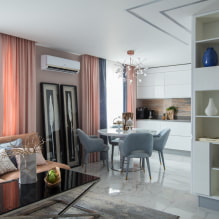
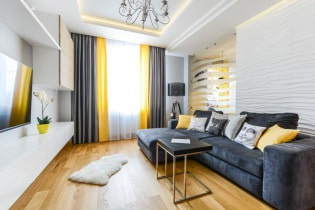 Choosing the best style of living room interior: 88 photos and ideas
Choosing the best style of living room interior: 88 photos and ideas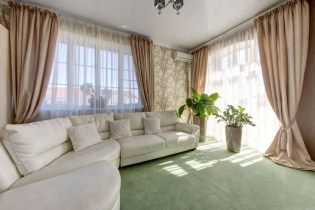 Curtains in the living room: 70 stylish photo ideas in the interior
Curtains in the living room: 70 stylish photo ideas in the interior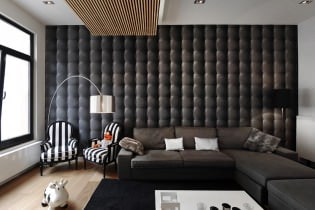 Wall decoration in the living room: choice of colors, finishes, accent wall in the interior
Wall decoration in the living room: choice of colors, finishes, accent wall in the interior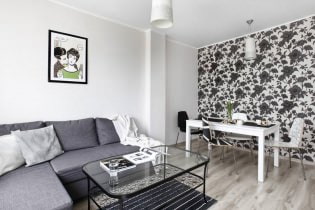 White and black and white wallpapers in the living room: 55 photos in the interior
White and black and white wallpapers in the living room: 55 photos in the interior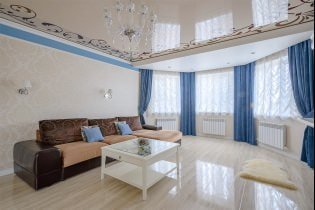 Stretch ceilings in the living room: views, design, lighting, 60 photos in the interior
Stretch ceilings in the living room: views, design, lighting, 60 photos in the interior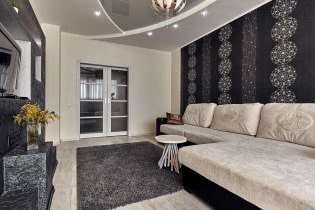 Wallpaper in the living room interior: 60 modern design options
Wallpaper in the living room interior: 60 modern design options